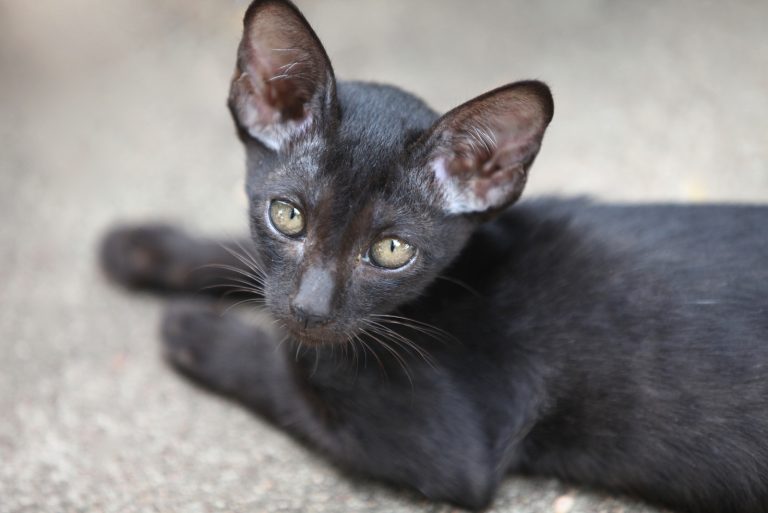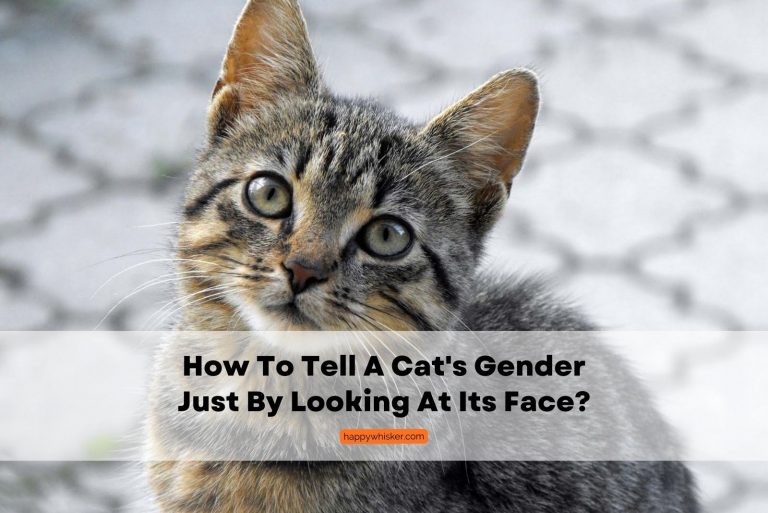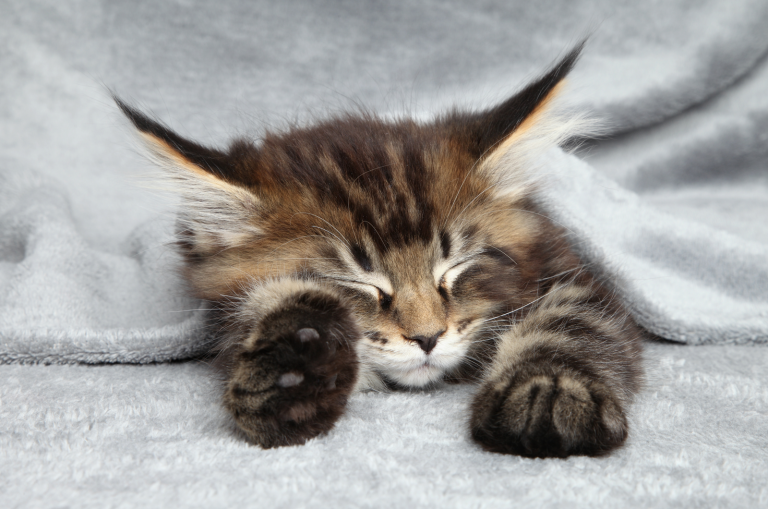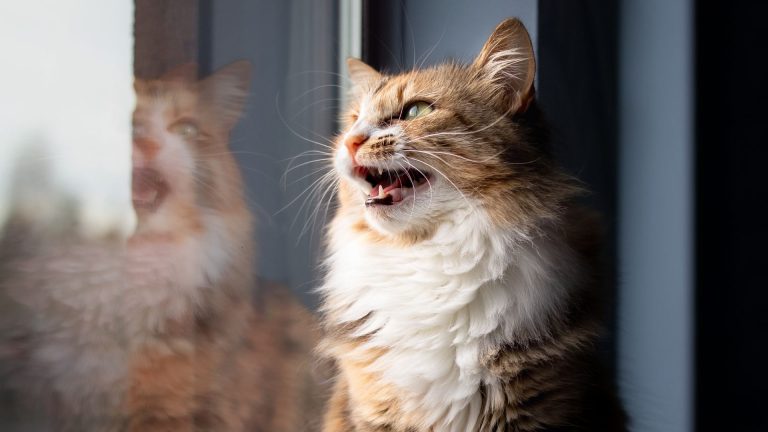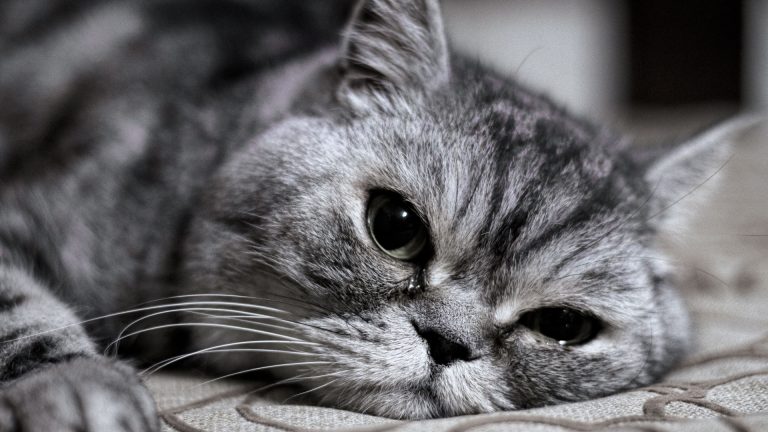How To Deal With A Ruptured Cat Abscess: Burst Hole Healing
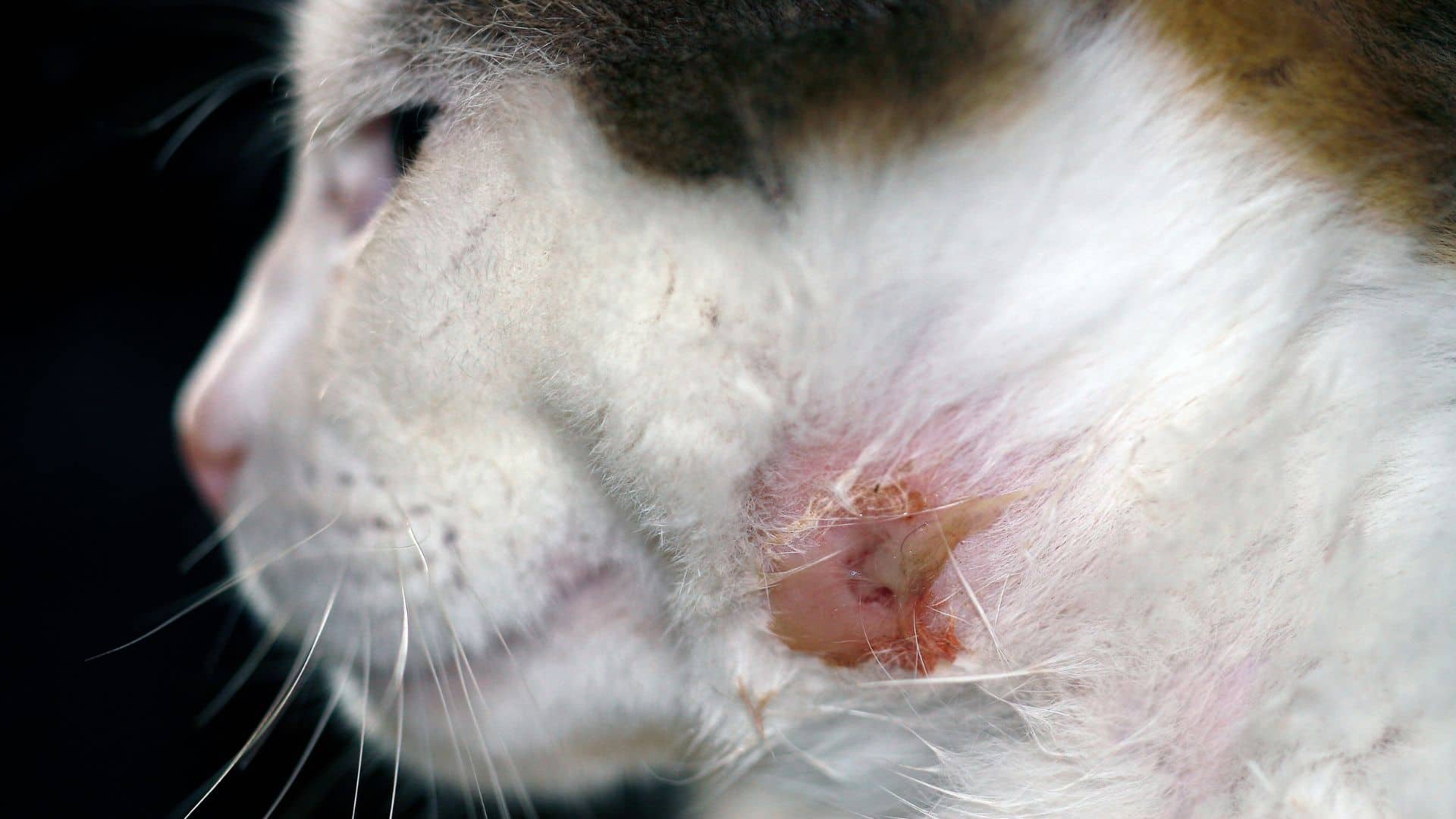
Our felines are very territorial, and sometimes, they have to defend what’s theirs. This might result in an infected bite wound, leading to an abscess.
If not treated on time, there is a chance the abscess formed will burst, which is very painful for the unfortunate cat. Apart from being painful, rupturing of the abscess can be an additional health issue for the cat.
In this article, I will go over how abscesses are formed, how to ensure a ruptured cat abscess burst hole heals, and how to prevent it from happening again.
Ruptured Cat Abscess: Burst Hole
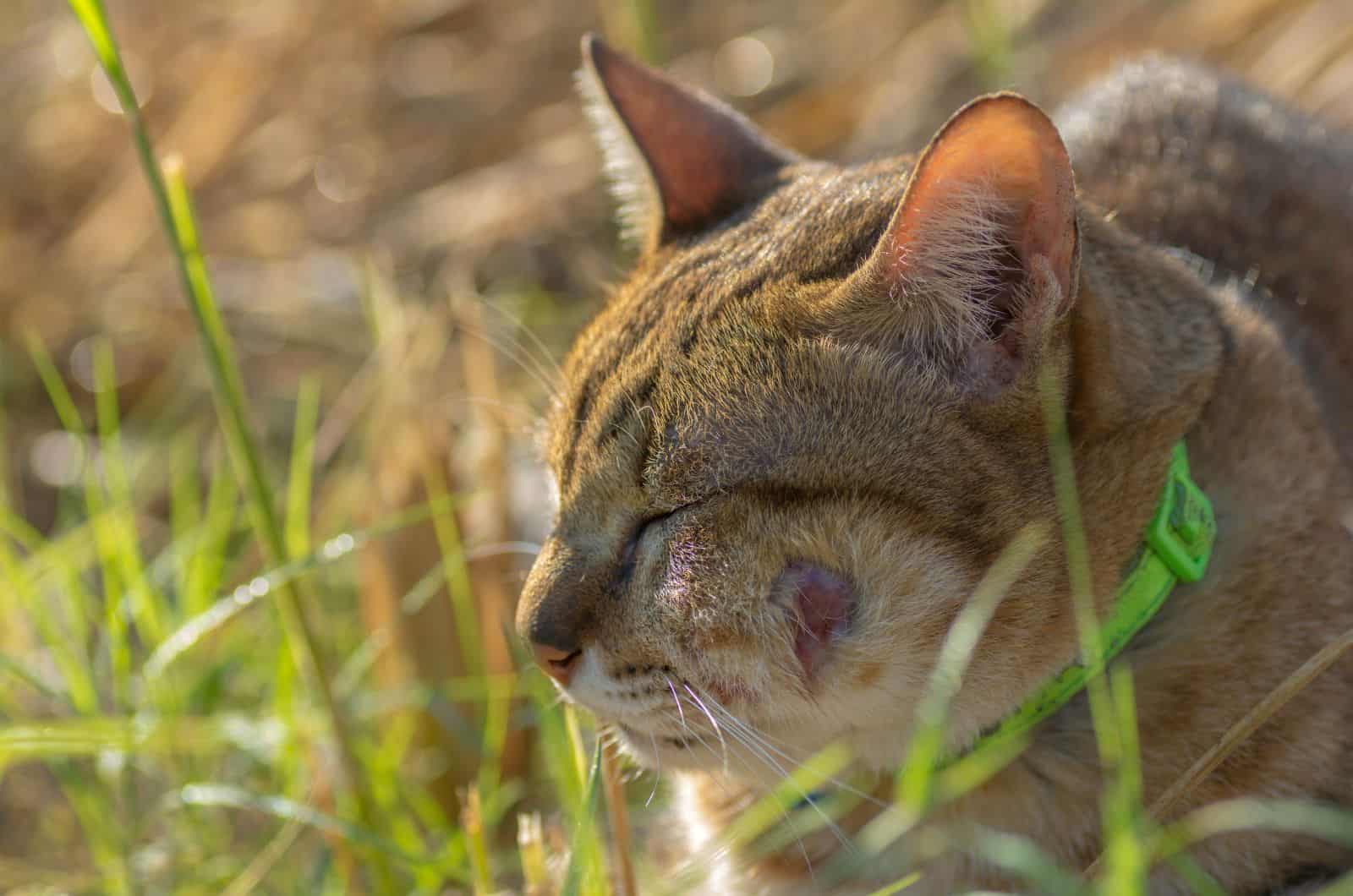
Abscesses are pockets of pus usually caused by a bacterial infection. This collection of pus can continue to grow if it is not treated or does not respond to treatment.
If the abscess pus causes enough pressure on the skin, it can rupture and release the pus. If this has happened to your cat, you might notice a hole in the site where the pus used to be.
Both ruptured and unruptured abscesses pose a health threat to cats that have them; therefore, it’s important they’re treated on time.
What Is An Abscess?
According to Harvard Health Publishing, an abscess is the pus that collects in a pocket of swollen, red tissue.
For cats, they most commonly develop on the skin’s surface and are clearly visible (if the fur does not cover it completely).
Bacteria often enter the skin through bite or puncture wounds, which leads to inflammation and pus formation. The pus itself is a yellow fluid, usually with a very pungent smell.
Pus is mainly made up of white blood cells that an infected animal’s immune system has produced to fight off invading bacteria or other pathogens, as well as some cellular debris and dead tissue.
The location of the abscess, the severity of the infection, and the type of bacteria present, will all affect the cat’s prognosis, but a fatality from an abscess is very unlikely.
Intact Male Cats Are More Prone To Having Abscesses
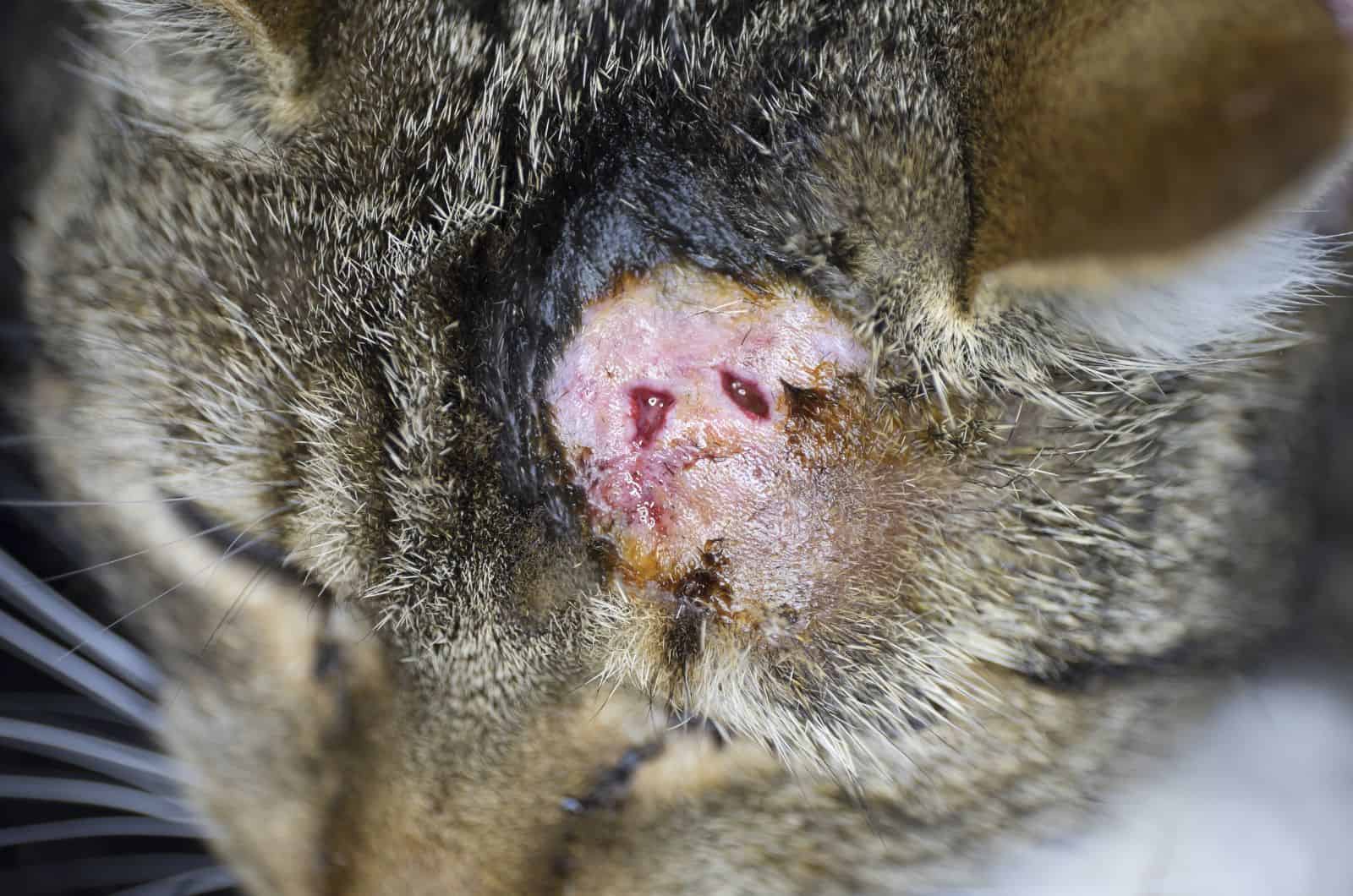
Abscesses usually arise due to bacteria entering the skin through a bite or puncture wound. So, which cats are more likely to suffer bite or puncture wounds? Intact male cats.
Intact male cats (especially strays) are known to roam over large areas in search of a female cat. This increases their chances of injury from an inanimate object, such as a thorn or piece of glass.
Intact male cats are also more likely to get into fights with other intact male cats, and this usually happens over a territory dispute or a female cat.
Either way, If bacteria enter through the open wound, a pocket of pus can form, resulting in abscess formation.
Abscesses are very rare in stray or outdoor female cats and even more rare in indoor cats.
Signs Of Abscess Development & Rupture
Although they can develop anywhere on the body of an animal, abscesses most usually develop on the limbs, face, the base of the tail, and the back.
The following are the signs of abscess development and subsequent rupture (although this does not happen for every cat):
• presence of a bite mark or a puncture wound,
• localized swelling,
• fever,
• pain,
• lethargy
• loss of appetite,
• foul-smelling pus oozing from the abscess (can contain blood),
• matted fur around the ruptured abscess,
• limping if the abscess is on the leg.
If your cat has a compressible swelling on its body but no visible teeth marks, the abscess has not yet burst.
What Causes An Abscess?
When felines fight, they use their sharp claws and bacteria-covered teeth. Dirt and bacteria are introduced into a cat’s skin by the claws or teeth of another cat. The cat’s skin seals over the wound, trapping dirt and bacteria inside.
Once under the surface of the cat’s skin, the bacteria cause an infection. Until the cat receives help, the infection under its skin will spread until the site fills with pus, ruptures, and occasionally leaves a gaping hole.
Abscess Rupture
A skin abscess would typically ultimately rupture on the skin’s surface and leak pus if left untreated. This usually happens when the abscess becomes larger and more painful for the unfortunate cat.
Because the pus is expelled and the body has a higher chance of healing on its own, an abscess rupture can be beneficial.
Burst Abscess Treatment
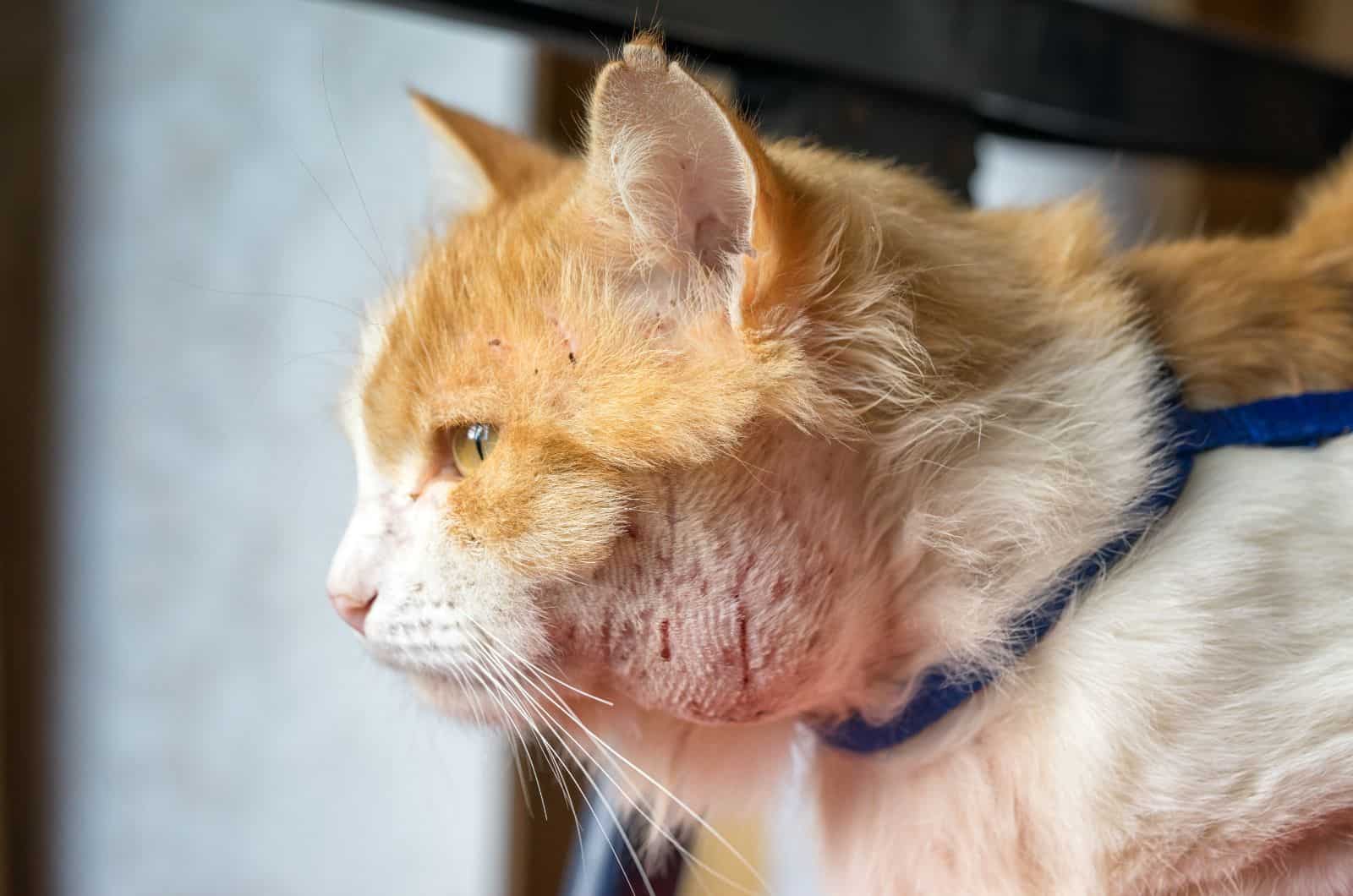
If your cat’s abscess has burst, you might wonder if you can treat it at home or take it to the vet. I always suggest taking your cat to the vet, as improperly handled ruptured abscess can spread the infection to other sites.
If the burst abscess is small, it is possible to treat it at home; however, I would still recommend you take your cat to the vet.
At Home
Sometimes a skin abscess will spontaneously burst and drain at home without any additional issues.
If the abscess has ruptured and you decide not to go to the vet, home care involves;
• cutting the hair away from the wound, and
• washing the affected area with salty water and a washcloth (half a teaspoon of salt per glass of warm water)
Saltwater washing will assist in clearing the pus and promote healing. Never use rubbing alcohol or hydrogen peroxide on an abscess because they will sting your cat’s wound, which is uncomfortable and painful.
Wipe the wound with a clean towel dipped in warm water to keep it clean. Wipe the area repeatedly until all of the visible pus is gone.
You might need to get a collar to stop your cat from licking the wound.
Going To The Vet
If a cat’s burst abscess wound is large, and you notice your cat is in a lot of pain, you need to take your cat to the vet as soon as possible.
First, it is necessary to completely drain the wound of all potential pus that remains. The vet is trained in how to perform that safely and successfully.
Once the pus has been removed, the vet will clean the hole left by the abscess using sterile saline (a salt solution) or an antiseptic, if the wound is deeper.
The vet might take a pus sample and test it to determine which bacteria have caused the infection. Based on the result, the vet can decide which antibiotic is best for the cat.
The cat is often treated with antibiotics as a preventive measure against further bacterial infection development. Some cats might be prescribed pain relief medication as well.
What To Expect At The Vet’s Office
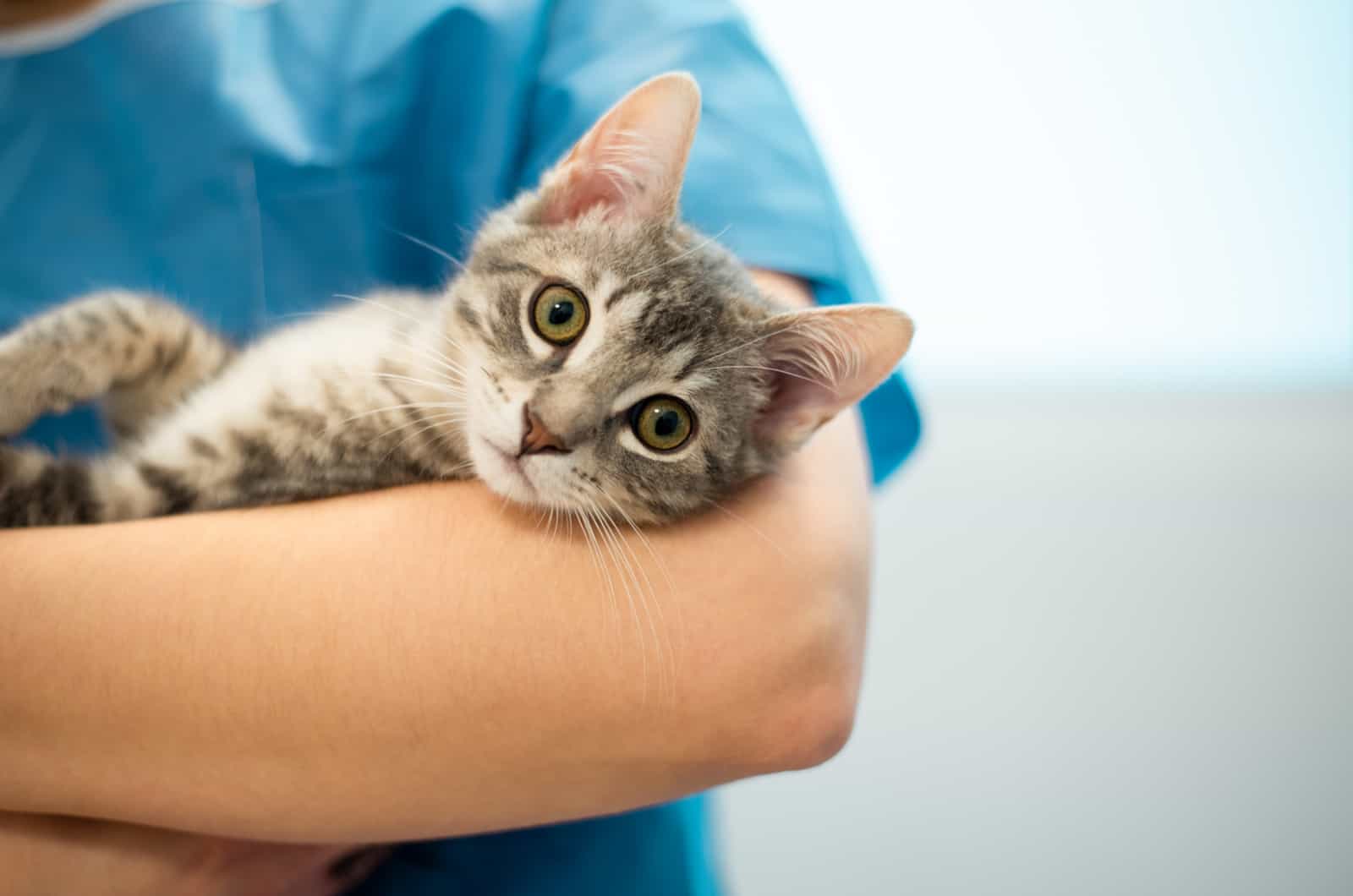
When you bring your cat to the vet, the vet will usually thoroughly examine the abscess and your cat’s general state of health.
Your veterinarian may be able to treat your cat without sedation if the abscess is open and draining.
The vet may occasionally install a drain to keep the abscess open and draining. It will be crucial to keep the drain in the best condition. After three days, the veterinarian will often remove the drain.
For your vet to choose the best course of treatment for your cat’s particular circumstances and lower the possibility of possible drug interactions, be sure to let them know about any drugs or supplements your cat is already on.
Post-Vet Care
Pet owners, when your cat gets home, it’s essential to follow some easy guidelines to ensure your cat’s healing process goes smoothly. Most of these tips apply even for at-home care for felines that did not go to the vet’s office.
Guidelines include:
• Once your cat gets home, make sure she’s not walking around the home, running, and jumping.
• Make sure the space is warm and dry, and give your cat everything she needs—including a litter box, plush blankets, food, and clean water—to recuperate peacefully.
• If your veterinarian leaves the wound open to drain, clean it twice daily for two to three days using gauze, cotton balls, warm water, or a wound and skin cleanser recommended by your veterinarian.
• Your cat could find comfort in warm compresses in the early post-discharge days.
• Even if your cat seems to be getting better after a few doses, make sure you give them the entire course of antibiotics that have been recommended.
How Long Does Healing Take?
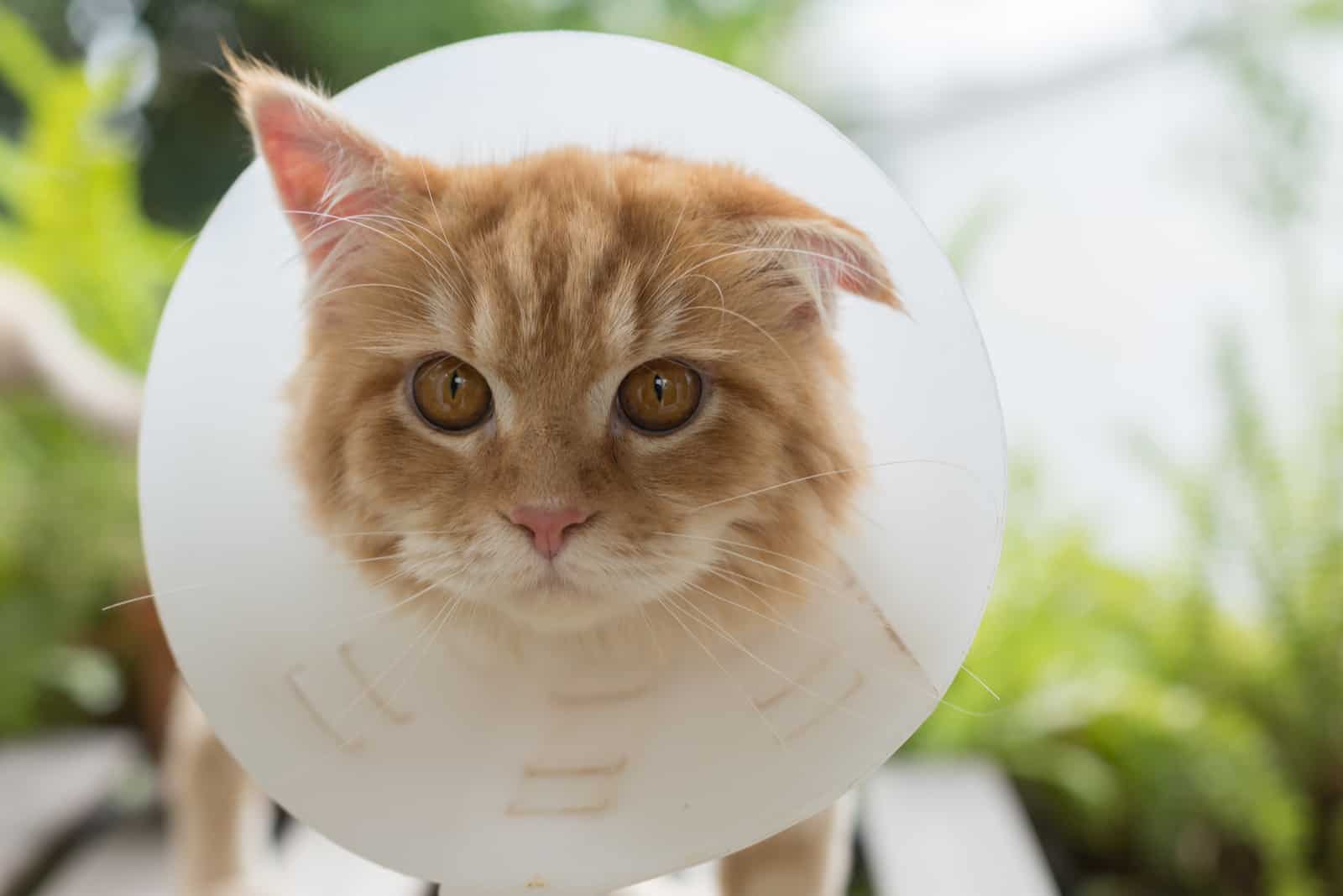
The recovery time entirely depends on how serious the initial abscess was.
• If the lesion is an ordinary abscess, good pet care might speed up the healing process to 5-7 days.
• Healing might take a few more days if your veterinarian installed a drain.
The healing process would take roughly two weeks if the abscess needed surgery. Any sutures will then be taken out.
You should return to the veterinarian for another examination if your cat’s recovery is not proceeding properly.
Recurring infections may be a symptom of viruses like feline leukemia virus (FLV) and feline immunodeficiency virus (FIV) (FeLV). These conditions weaken the immune system, which might make it more difficult for the cat to recover from an infection.
Will A Burst Cat Abscess Heal On Its Own?
Taking care of your pet’s abscess is crucial because, if it is not kept clean and treated with the appropriate medicine, the infection might spread.
If you notice your cat’s abscess has ruptured, you should not “let it be”. Even if you decide against going to the vet, you can still take steps to help your cat’s healing process.
Even while an abscess might not require medication, it needs to be treated appropriately to heal fully.
If left untreated, the infection could continue being present in the primary wound and other areas of the body, leaving the cat very sick.
An infection that is resistant to antibiotics might develop from an untreated abscess. Therefore, you should never let your cat’s abscess heal without your help.
Prognosis
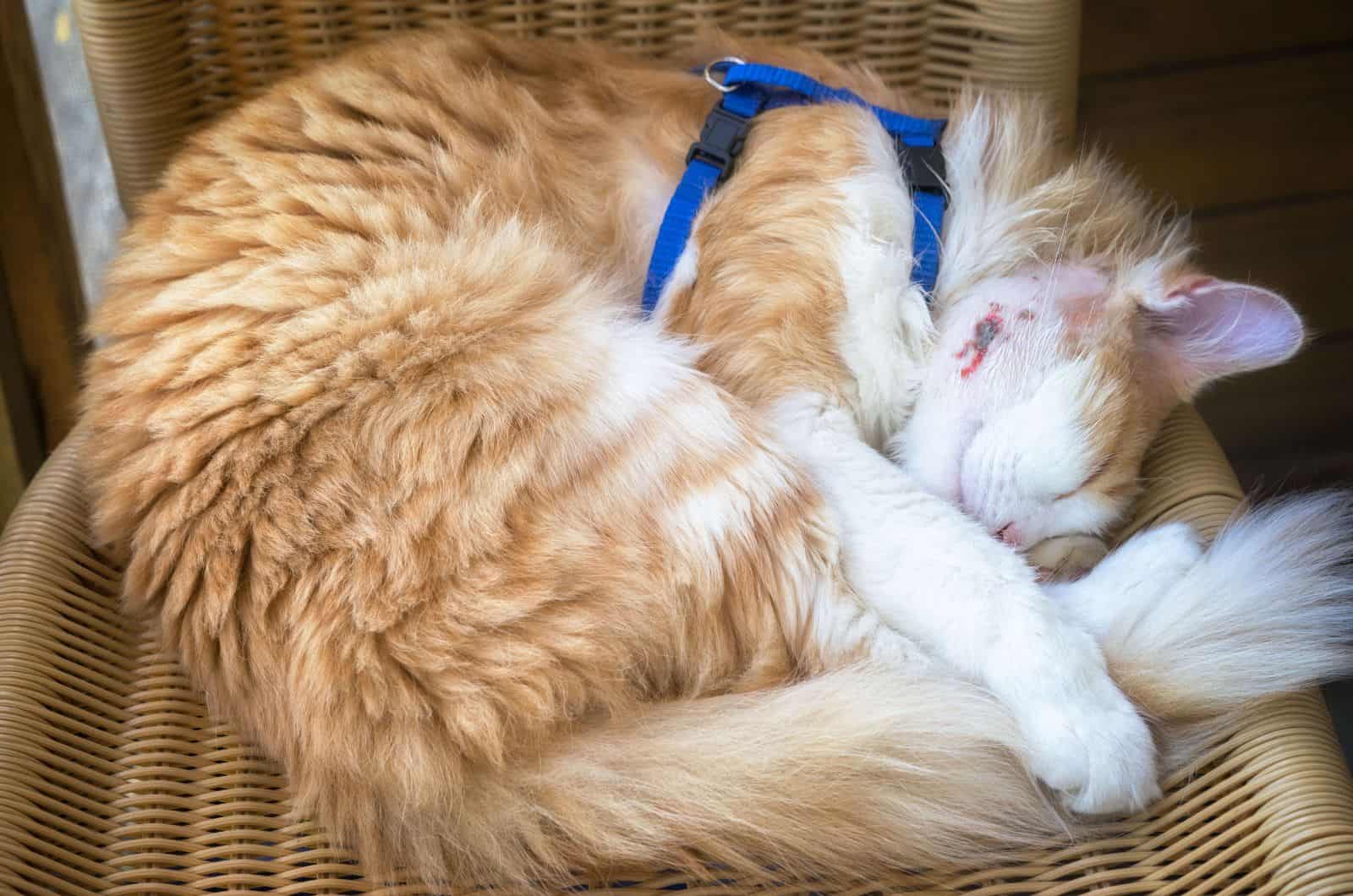
The prognosis for cats that have experienced a ruptured abscess and gotten proper treatment is very good. With the right care, most cat abscesses disappear in two weeks.
If the abscess resulted from an animal bite, you might still be able to see a little scab at the bite site, but other than that, the cat should be perfectly well!
However, note that the prognosis greatly depends on the cat actually receiving proper treatment. It’s crucial to treat a ruptured abscess (un-ruptured abscess as well) on your cat as soon as possible.
Prevention
With cuts, scrapes, and bite wounds come the potential for infection, which may show as an abscess. I’ve already mentioned that most cats with abscesses are intact male cats that roam over large areas and tend to get into fights with other cats.
Therefore, to prevent scrapes, scratches, and bite wounds in intact male cats, the best course of action is to prevent roaming and catfights.
Even though it may be difficult to prevent future catfights, there are steps you can take to lower your cat’s risk of abscesses, such as:
• As much as possible, especially at night, keep your cat inside. At night, there are more cat battles.
• Get your cat neutered. Male cats fight more than female cats due to territory disputes and access to female cats. Males who have been neutered tend to avoid conflict.
• Take your cat to the vet as soon as possible if you believe it has been involved in a serious fight. By receiving prompt medical attention for any wounds, you can avoid the development of an abscess.
Neutering Intact Male Cats
The medical procedure known as orchiectomy, during which both testicles are removed to sterilize a male cat, is more often referred to as neutering or castration.
It is advised to get a cat neutered to reduce the risk of infection due to territorial behaviors like wandering and catfights.
Neutering has no negative side effects; however, it’s crucial to remember that the treatment does cause a slowdown in metabolism; thus, diet will need to be appropriately modified to avoid excessive weight gain.
FAQ

What Are The Symptoms Of A Burst Cat Abscess?
Symptoms of a burst cat abscess are the same as for a human’s burst abscess; you will notice a foul-smelling discharge at the abscess site. Apart from the unpleasant odor, you will notice the discharge is yellow, gooey pus. The surrounding area will be red and inflamed. It’s possible the cat will become aggressive and not let you approach the wound.
What Are The Risk Factors For A Cat Abscess?
Cats that frequently acquire open wounds are more likely to develop abscesses than cats who rarely get scratched or bitten. Intact male cats, especially stray cats, are more likely to develop an abscess as they frequently get into fights and are at a higher risk of developing an infection due to bacteria entering the wound.
Is It Good If An Abscess Bursts?
Most of the time, abscesses need to be drained for the healing process to start. Antibiotics alone are usually not sufficient. Therefore, draining the pus is the first step toward healing. However, this should be taken care of by a vet.
Will A Cat Abscess Burst On Its Own?
Yes, abscesses can burst on their own. If you notice your cat has an abscess, please refrain from squeezing and popping it out yourself. That can lead to the infection spreading to other sites, which is dangerous. You should go to a vet if your cat has an abscess on any part of its body.
Is A Cat Abscess An Emergency?
While abscesses are typically not considered medical emergencies, they can develop into serious medical problems if not treated. Therefore, even if a cat does not suffer from a burst abscess, it’s recommended to take the cat to the vet for proper treatment.
What Happens If A Cat’s Abscess Does Not Heal?
There is a chance the abscess will not heal as fast as it should. In this case, you need to take your cat to the vet, and they will try to find what’s causing the lagged healing.
Can A Cat Die From An Abscess?
It is very unlikely that a cat will die from an abscess. However, it’s important to note that abscesses need to be treated. The underlying bacterial infection can spread to other sites of the body, which can potentially be very dangerous for the cat.
In Conclusion
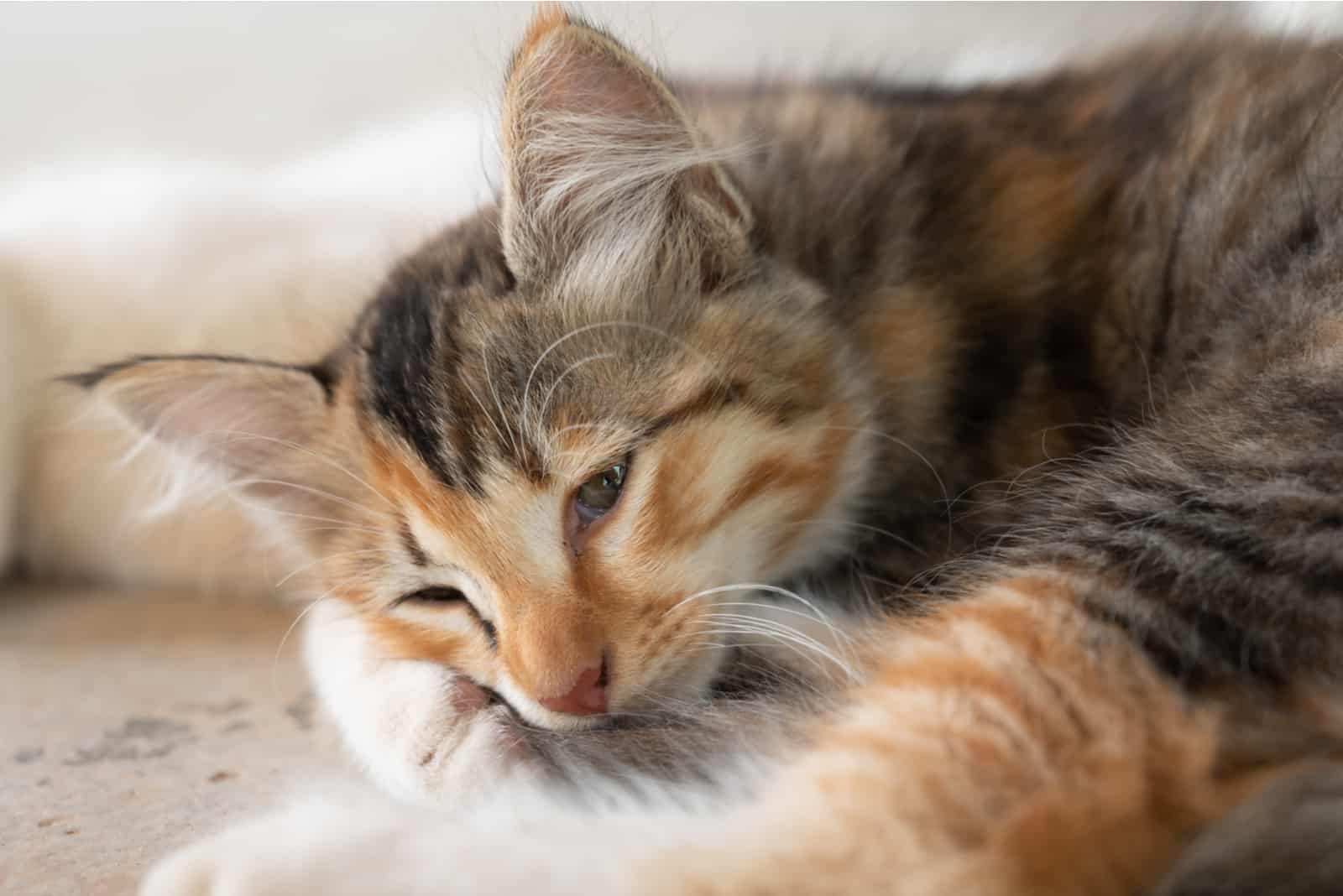
An abscess forms when bacteria enters through the cat’s skin into the underlying tissue and causes an infection. After the cat’s immune system reacts, pus will be formed, which is a foul-smelling yellow liquid made of white blood cells, tissue debris, and bacteria.
If the pus pocket puts too much pressure on the skin, the skin may break, which causes abscess rupture. It should be noted that this is very painful for the unfortunate cat.
If your cat has experienced a ruptured abscess, you might be concerned about what to do about it. To ensure the ruptured cat abscess burst hole heals nicely, it would be wise to take your cat to the vet’s office, as they’re trained professionals who know the right course of action.
Outdoor cats, especially intact male cats, are more prone to having abscesses and them rupturing; therefore, it’s important to keep your outdoor cat somehow confined in your yard and, preferentially, have your intact male cat neutered.
The good news is that prognosis for cats dealing with a ruptured abscess is great, and they heal up nicely in a few days or weeks. Therefore, ensure proper wound treatment, and your cat will be perfectly healthy in no time!
Have you considered putting an antibiotic cream on your cat’s wounds? If yes, please read this article on can you put Neosporin on a cat?


